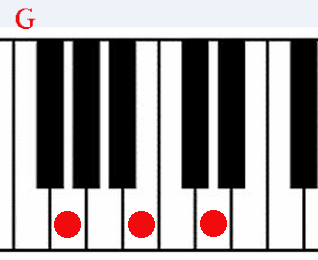
Follow the usual chord positions and fingering for most keys so the mind does not hesitate to decide which way to play each chord. Yet in some keys and with some chord progressions, it is easier sometimes to change to a different position. An example is chord D played in the key of G.

Chord D can be played with the left hand in the third position instead of the usual second position. That helps playing in the key of G. Fingers are numbered 1 for the thumb, 2 for the pointer finger and through to 5 for the little finger. Play chord G in position one with fingers 5, 4, 2, 1 as usual. Play DM in position two as usual but slide the thumb to play note f# and form chord D.
In the key of G, you can play chord D in the third position instead of the second. Play a triad chord G with fingers 5, 2, and 1 as usual. Jump to DM in the third position with the same fingers but with finger 2 on note F# to form chord D. Anchor on the thumb, note d.
Strong and exact note playing comes with keeping all fingers close to the keyboard when they are not playing a note. Practise keeping the pointer finger close to a key for pattern one while playing a strong note with the little finger. While playing any note with one finger, keep the other fingers almost touching the keys.
Practise that with right handed scales and left handed chords. Play three or four notes together for the first beat of a chord then a single not for beats two, three and four. With the right hand, play chords D then G for the first beat of each bar and play one note with the little finger for beats two, three and four. Keep fingers close to the keyboard. After the right thumb or little finger stretches to play an outer note, bring it back quickly to its start position. Practising like that leads to smooth, strong and exact note playing.
As for notation, the thumb can be noted as letter T instead of number 1 because T is easier to read. But avoid confusion by not following the notation of T for the thumb then 2 for the pointer, 3 for the middle finger and so on, as is often used for guitar tutorials.
See the chord and fingering chart in this book.